Taking the Struggle to the Streets: Community Activism
Photography by Collette V. Fournier
As an artist/photographer, we often travel through various stages to communicate our feelings and opinions. Images presented in Taking the Struggle to the Streets: Community Activism are a compilation of my visual interpretations from over the years. Having been raised in the sixties and seventies, one genre that never swayed from my soul was the documentation of our civil rights which included die-ins, rallies, marches, memorials of historians and fallen leaders. So many leaders put their lives on the line to make our lives better.
Whether shot in black and white or color, analogue or digital, I relied on the documentation of the event to stimulate my vision bringing together elements of composition, light, form, environmental portraiture and the decisive moment.
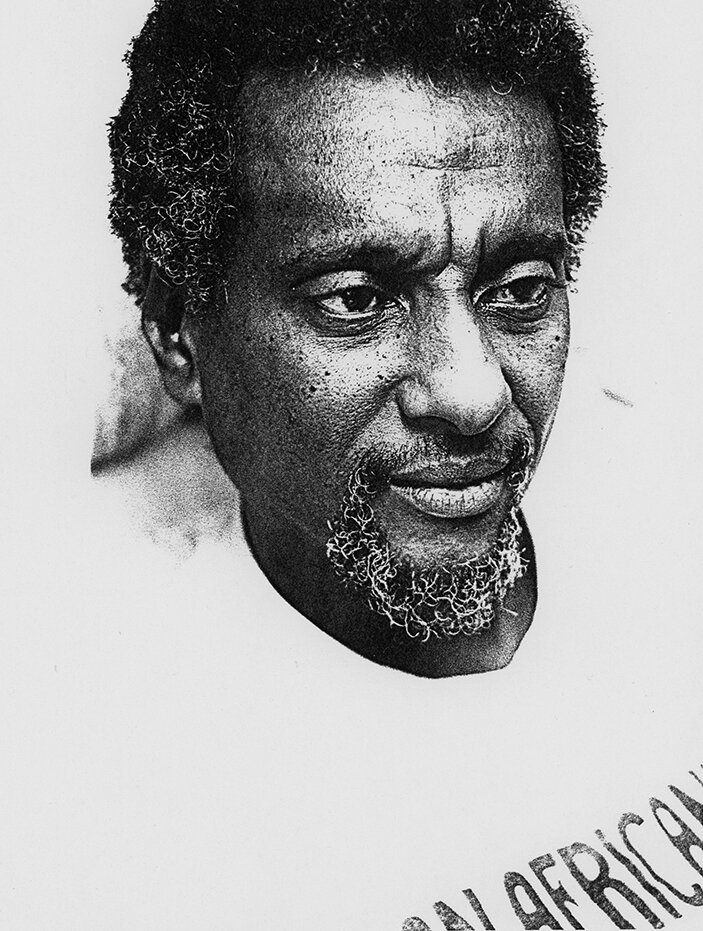
Stokely Carmichael/Kwame Ture, Rochester, NY, 1985
Stokely Carmichae aka Kwame Ture, activist, author, (born June 29, 1941, Port of Spain, Trinidad—died November 15, 1998, Conakry, Guinea), West-Indian-born civil rights activist, leader of Black nationalism in the United States in the 1960s and originator of its rallying slogan, “Black power.” Faithfully serving, with great integrity, the cause of Black people’s struggle. Formed the All African People’s Revolutionary Party (AAPRP) a precursor to Black Lives Matter.
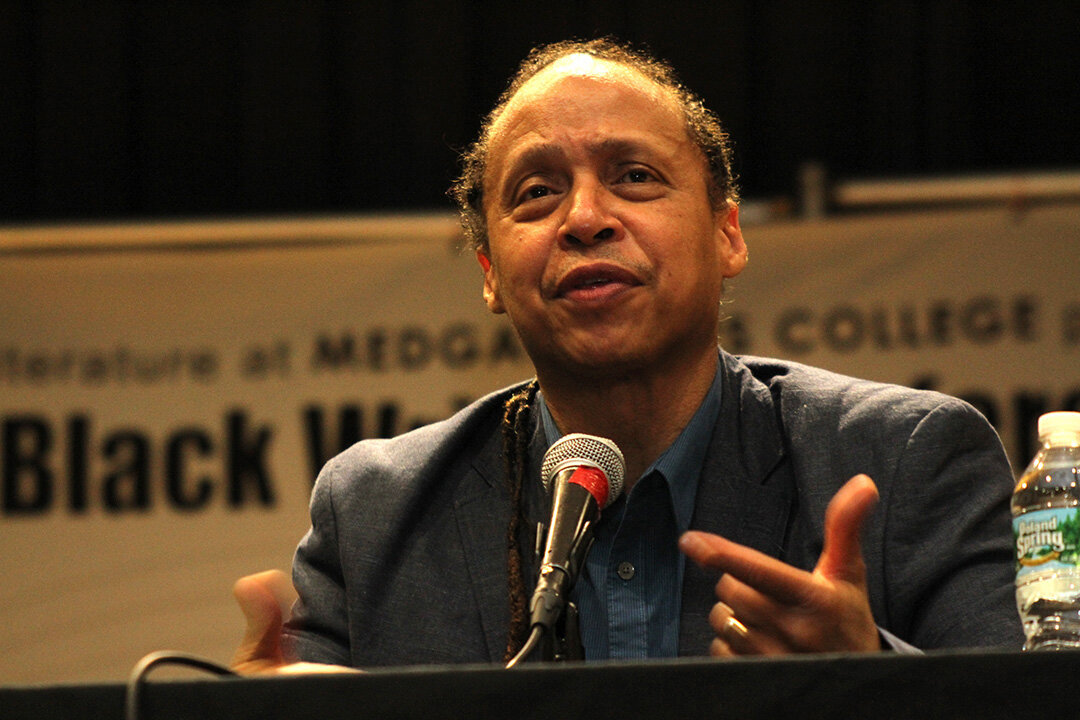
Jamal Joseph, Passaic, NJ, 1990
A young Black Panther Jamal Joseph survived the revolution, educated himself, published his story and became a college professor teaching film. While photographing for The Bergen Record newspaper, I met and photographed Brother Jamal Joseph in the 1990s during an African American History Month lecture at Passaic Community College in Passiac, NJ, and have followed his career ever since.
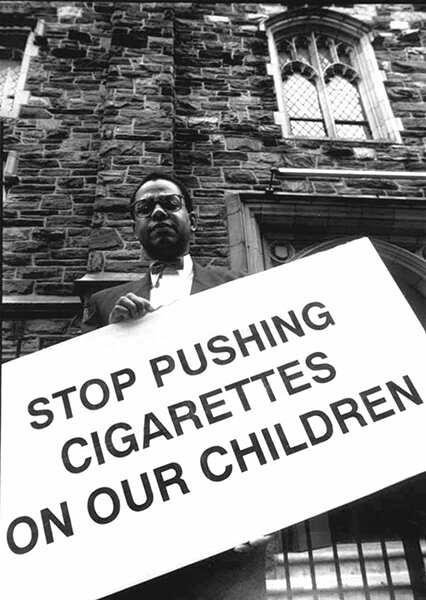
Rev. Dr. Calvin Butts, Harlem, NY, 1990
The Rev. Dr. Calvin Butts, pastor of the Abyssinian Church in a campaign to stop cigarette advertising in African American neighborhoods.
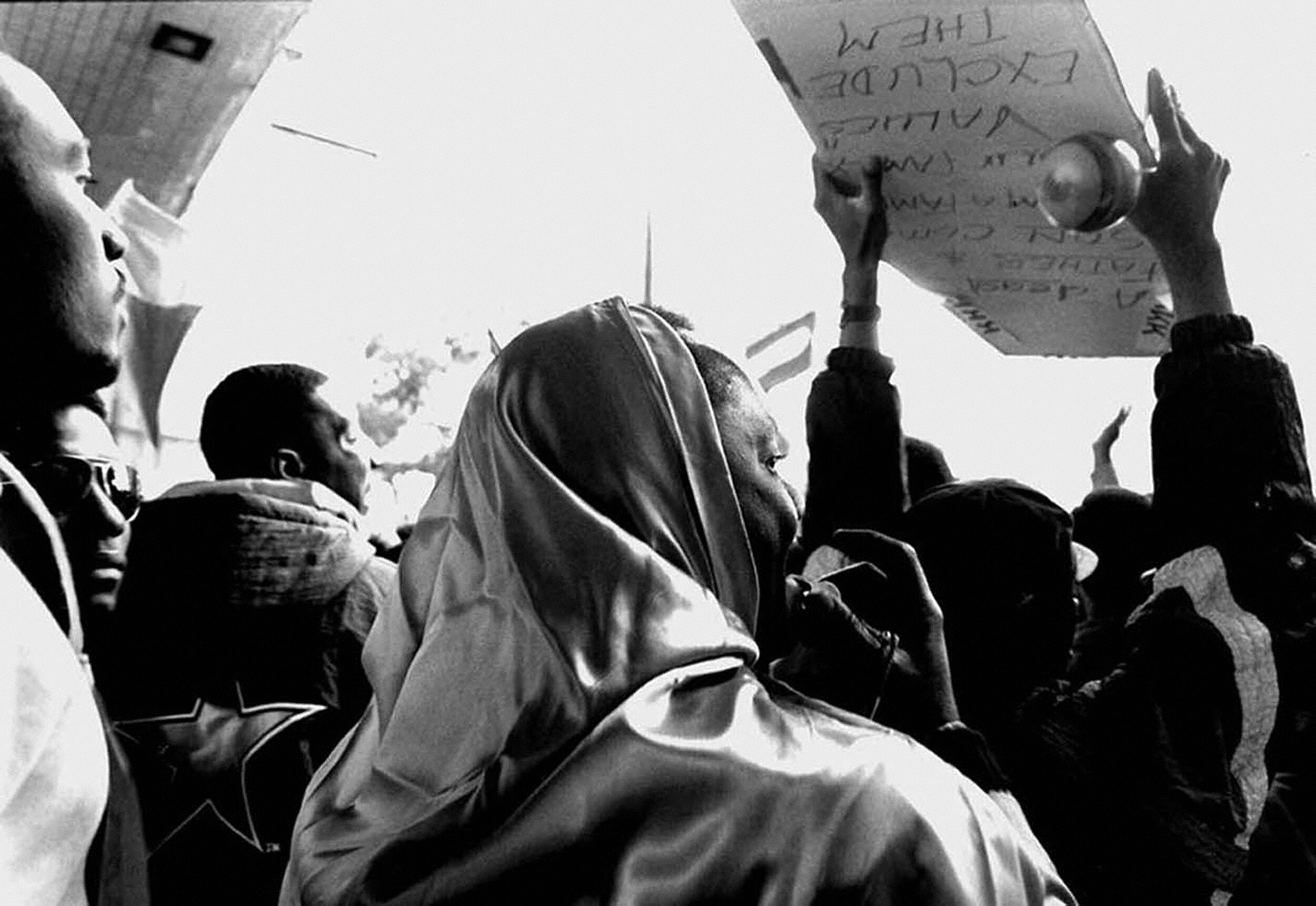
Haitian Rally, United Nations, NY, December 1991
Haitian rally against Pres. George Bush and AIDS controversy at United Nations, NYC. The history of slavery in Saint-Domingue, like that of slavery everywhere, is a history of constant rebellion and resistance. The history of Haiti. as a territory of France, is very connected to the French Revolution of 1789, which sparked the Haitian Revolution of 1791. History shows that Haiti's revolution against slavery sparked U.S. slavery revolts. The United States government has never looked kindly upon Haiti due to her people's effective resistance.
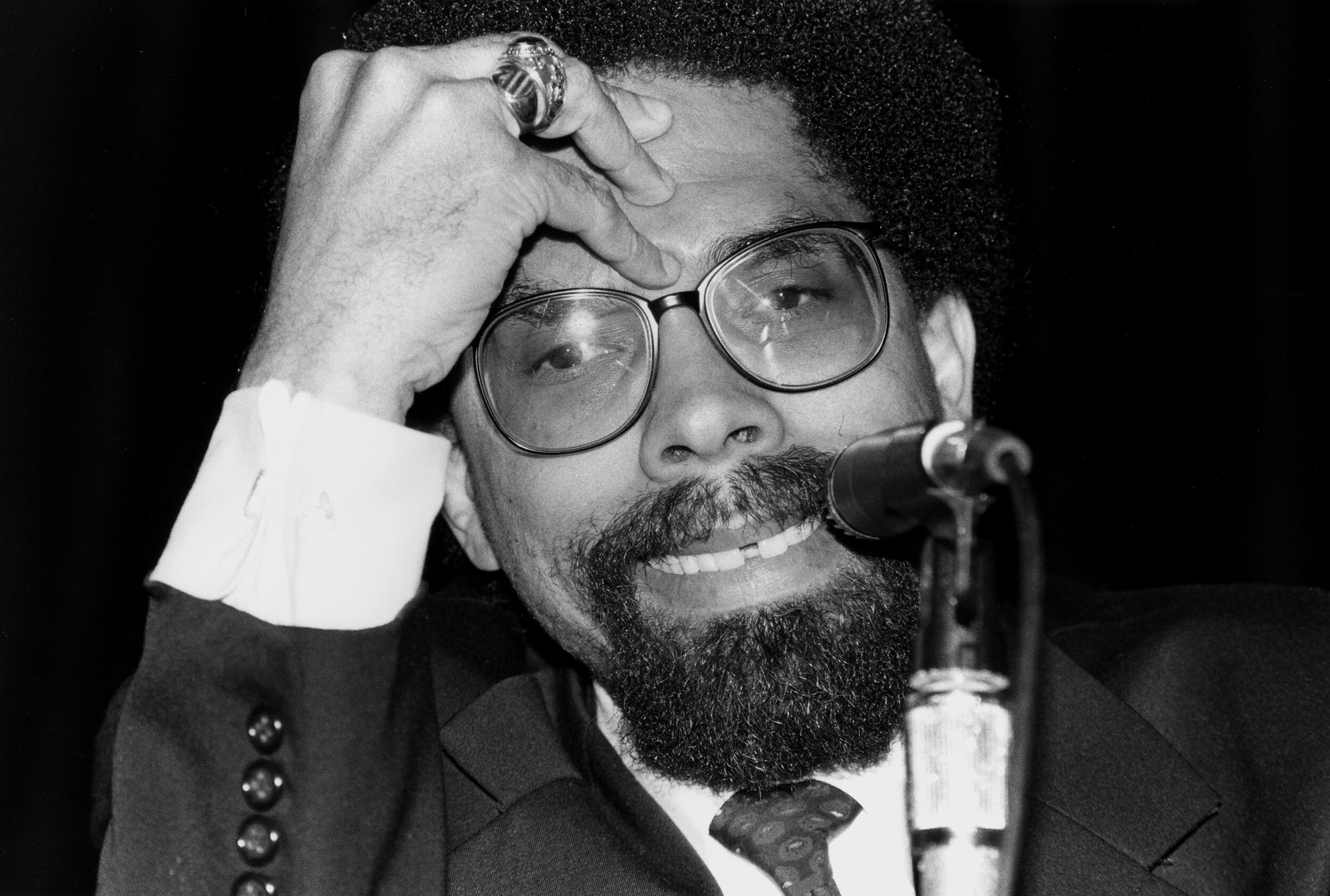
Dr. Cornel West, Atlanta, GA, 1994
Dr. Cornel West, Professor of African American Studies, Philosopher and Social Scientist. As an American philosopher, political activist, social critic, author, and public intellectual speaking at a National Association of Black Journalists (NABJ) conference. The grandson of a Baptist minister, West focuses on the role of race, gender, and class in American society and the means by which people act and react to their "radical conditionedness” and the author of “Race Matters”.
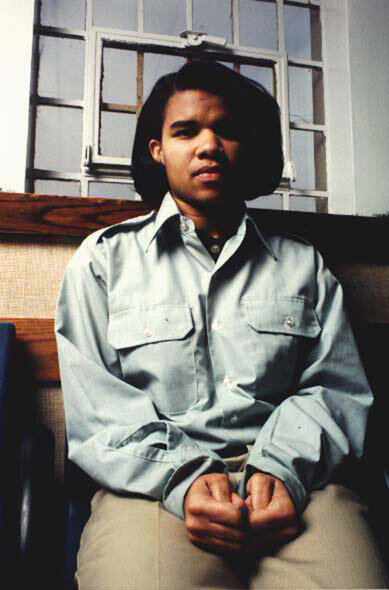
Kemba Smith, Danbury, CT, 1996
Kemba Smith, a young African American woman imprisoned for her involvement with a drug dealer in Virginia. Her federal mandatory sentence was for 24 1/2 years for conspiracy to distribute crack, money laundering and making false statements. She was a student at Hampton University when she got involved with the drug dealer. She suffered from mental and physical abuse. Her parents tour nationally doing a "Youth At Risk" Tour to publicize Kemba's plight. Exonerated by Pres. Clinton, she went on to study law. Women of color are the fasting growing population in prisons. Published in Emerge Magazine, 1996.
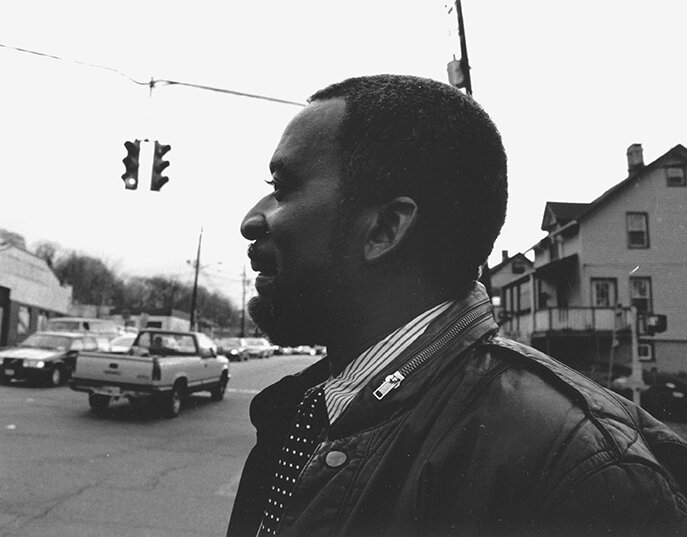
Walter Khan, Nyack, NY
Walter Khan, Community Activist in Nyack, NY at a rally. Walter Khan is also a Buffalo Soldier. Buffalo soldiers originally were members of the 9th, 10th, 24th and 25th Calvary Regiment of the US Army, formed on September 21, 1866 at Ft. Leavenworth, Kansas. This nickname was given to the Black Cavalry by a Native American tribe who fought in the Indian Wars. The term eventually became synonymous with all of the African-American regiments formed in 1866.
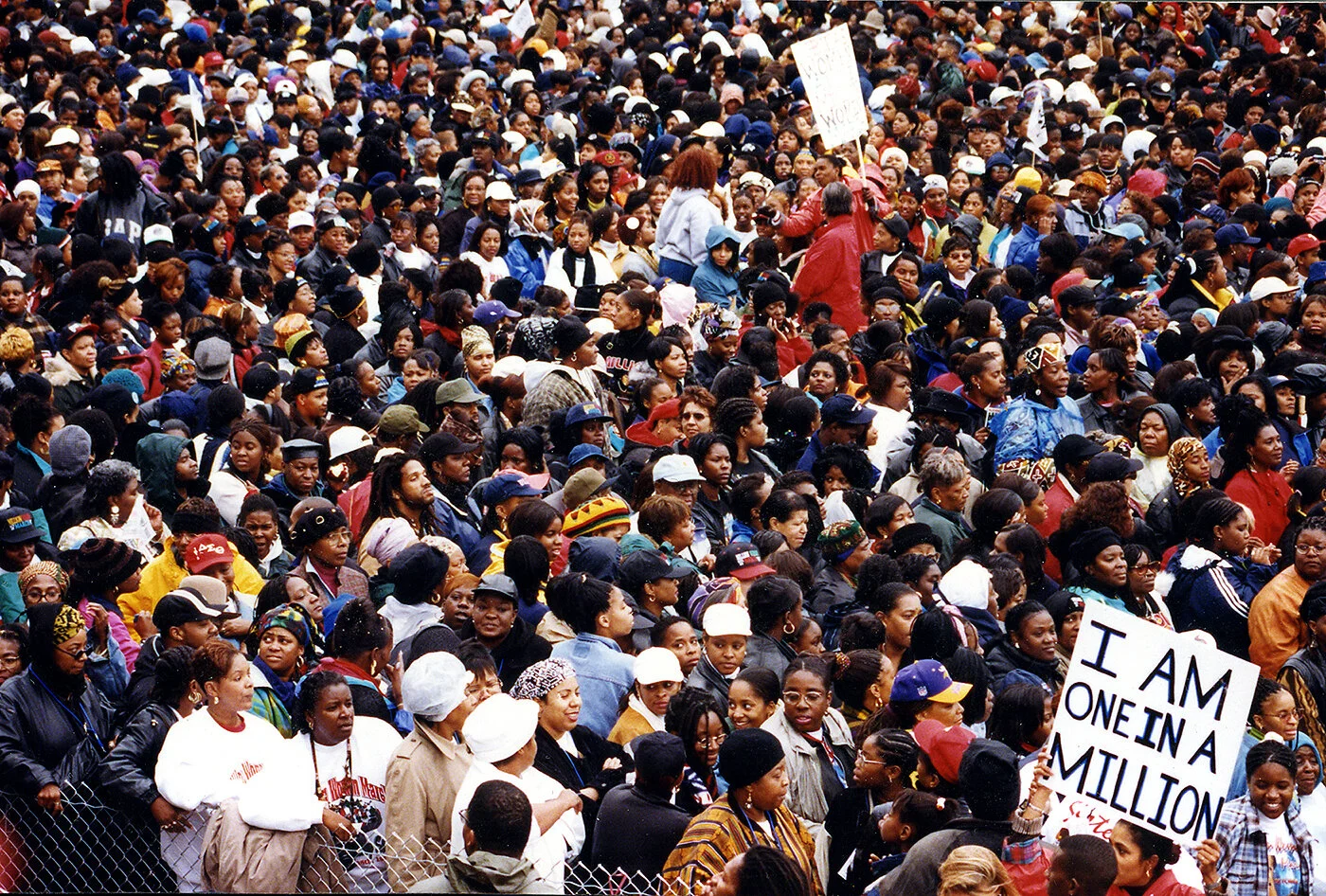
Million Woman March, Philadelphia, PA, October 25, 1997
Marjorie Davis, 35, of Cleveland, Ohio, holds an "I'm One in A Million" sign in a crowd among thousands of women who gathered in Philadelphia. Having press credentials, I was able to stand above the crowd. It was important to show the masses of Black women who attended the event. On this date, an estimated 750,000 African American women gathered together to march down the Ben Franklin Parkway in Philadelphia to focus on their trials, circumstances, and successes. The day-long march and program filled with prayer, music, and inspirational speeches, began at the Liberty Bell and ended on the steps of the Philadelphia Museum of Art. The march addressed the economic deterioration of African American communities, the importance of nurturing young children in a positive environment, finding a collective voice in politics, the civil rights movement, and strengthening black families.
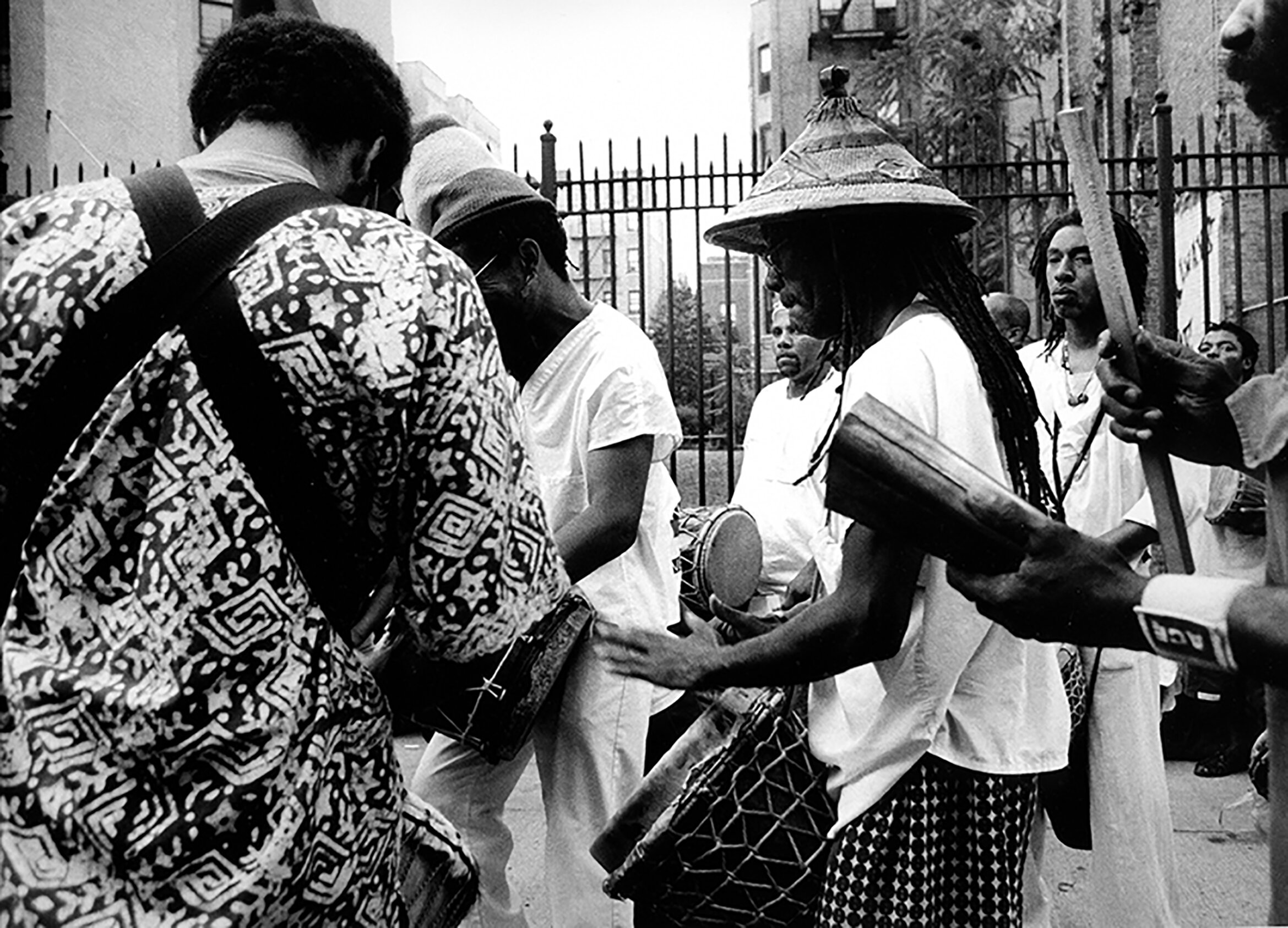
Harlem, NY, 1999
This trip to NYC was a gift to John Henrik Clarke, who is now an ancestor. It was a very positive way to spend on July 21, 1999 and to fraternize with my fellow photographers documenting this moment in African American history.
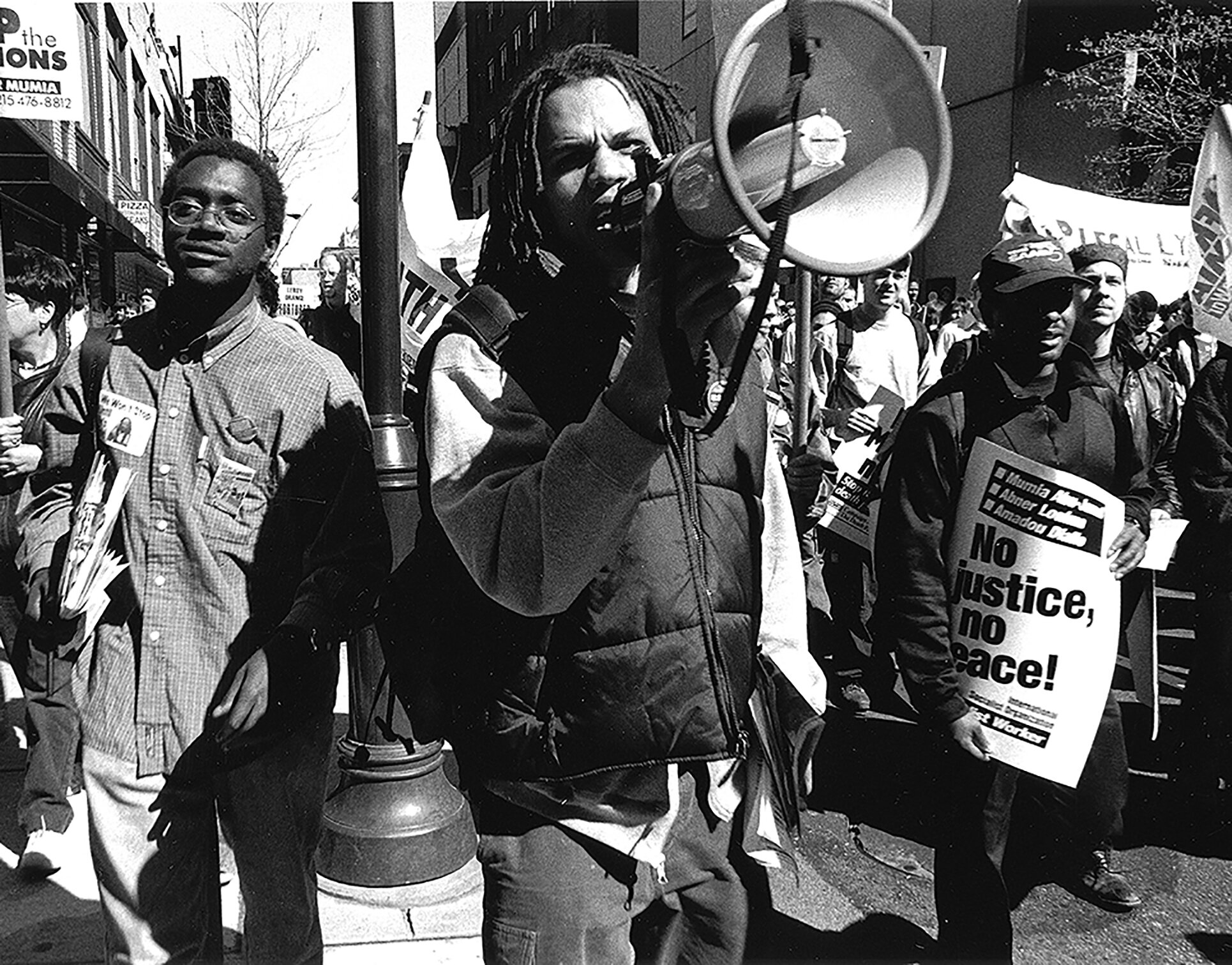
Millions for Mumia Rally, Philadelphia, PA, 1999
The Millions for Mumia Rally in Philadelphia was in support of death row prisoner, father, grandfather, Black Panther, journalist, ex-NABJ Philadelphia president, Mumia Abu Jamal. When Mumia was arrested many of his fellow journalists turned their back on him, withdrawing the NABJ’s support.
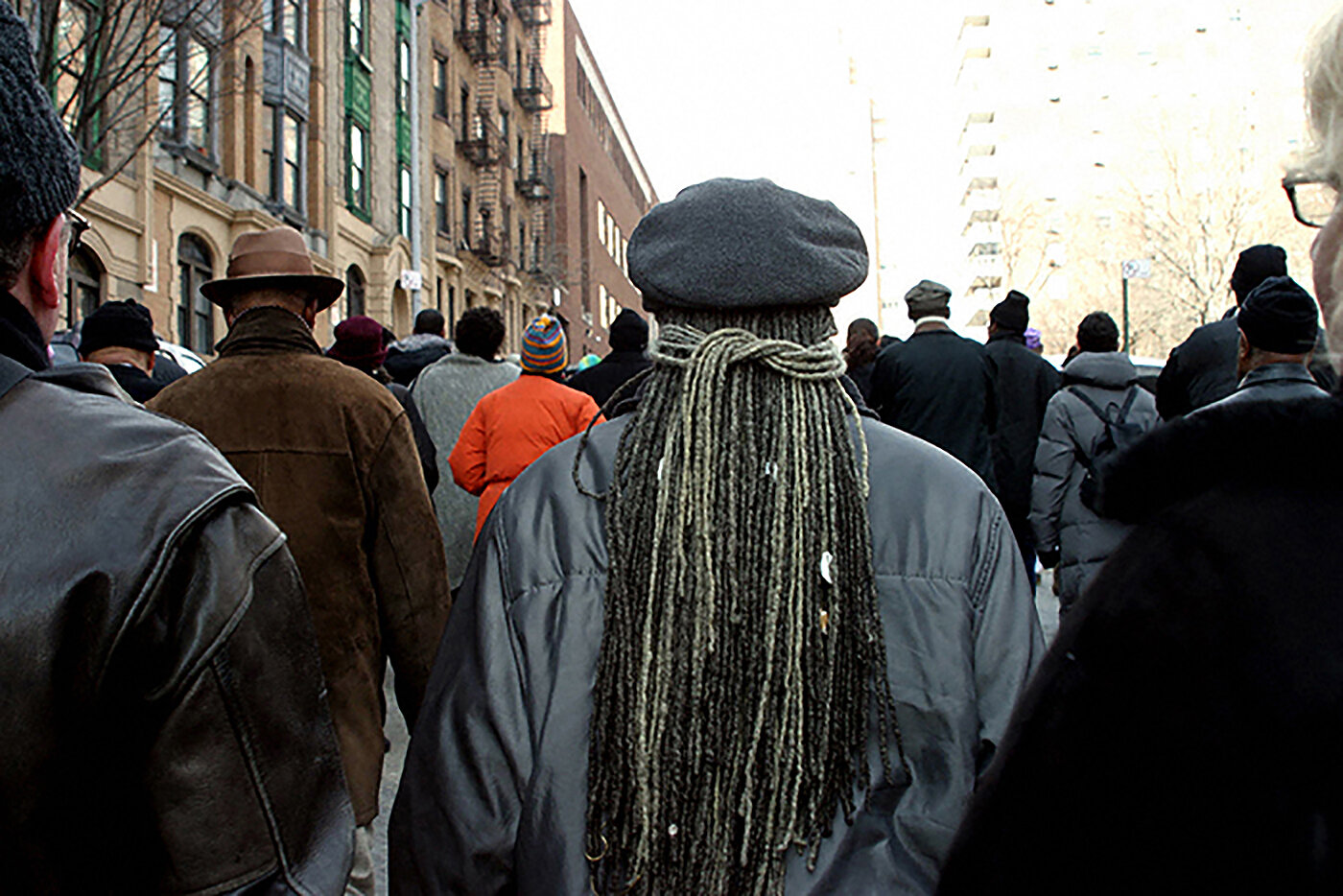
Harlem, NY, Feb. 12, 2005
The Harlem community marches towards Riverside Church in preparation for Ossie Davis' funeral.
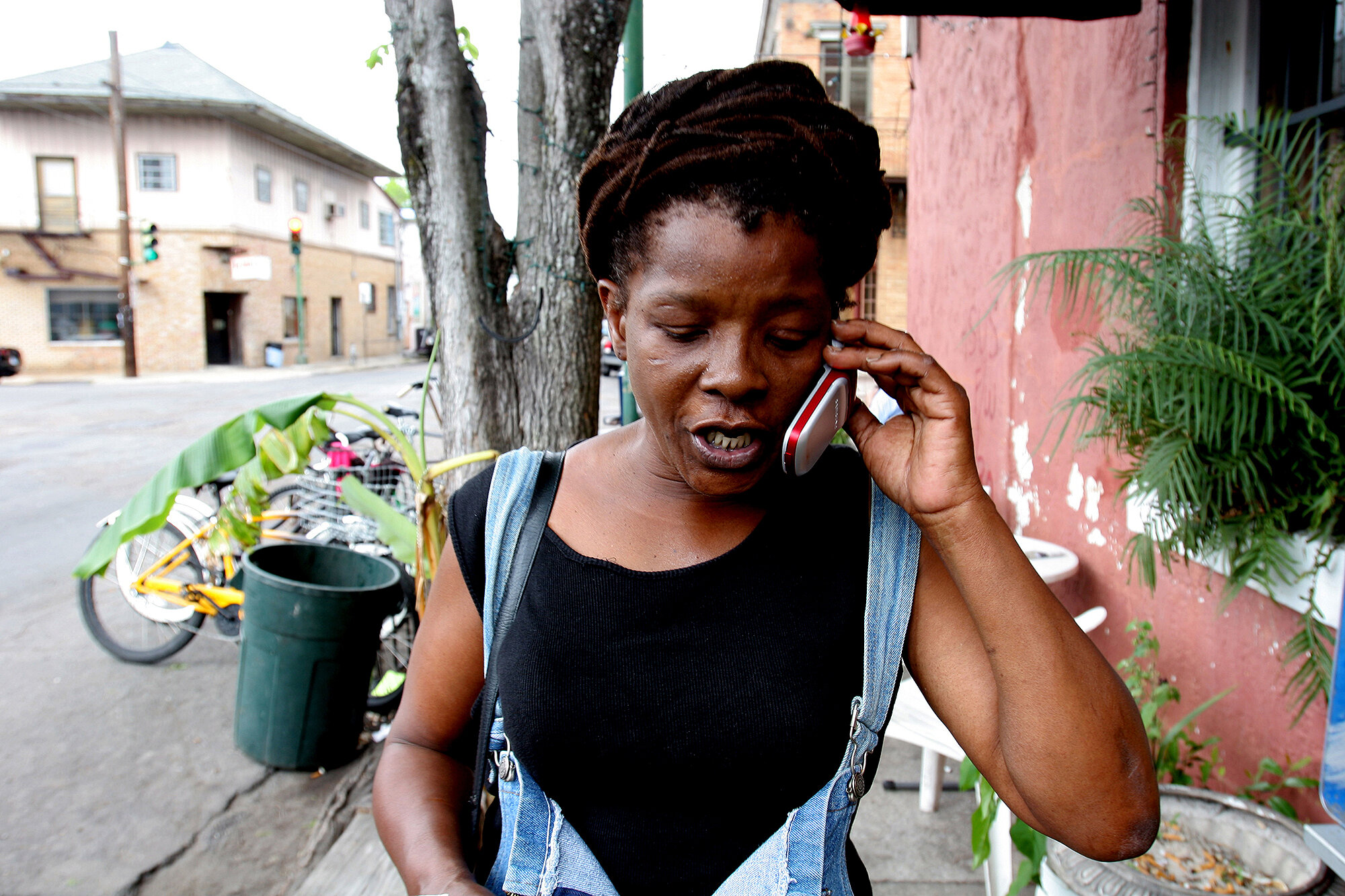
Leah Hodges, New Orleans, LA, 2007
Post-Hurricane Katrina Series; Leah Hodges, a community activist with Common Cause, talks on the phone to a client. Many days she got very little to eat as restaurants were not open for business and there was little clean water. She was dealing with many issues within her own family. She testified to Congress that Hurricane Katrina victims died from abject poverty. She defined the human spirit.

Thurgood Marshall Monument, Hillburn, NY
On this site in 1943, Thurgood Marshall, NAACP Legal Director and later U.S Supreme Court Justice, led the movement to end racial segregation in Hillburn Schools, Rockland County, NY. His petition prompted the New York State Commissioner of Education to close Brook School and send all the children to this building. The Ramapo Central School District, the Village of Hillburn and Mr. Marshall’s Brothers in Alpha Phi Alpha Fraternity, NAACP and Rockland County are proud to erect this monument in his honor.
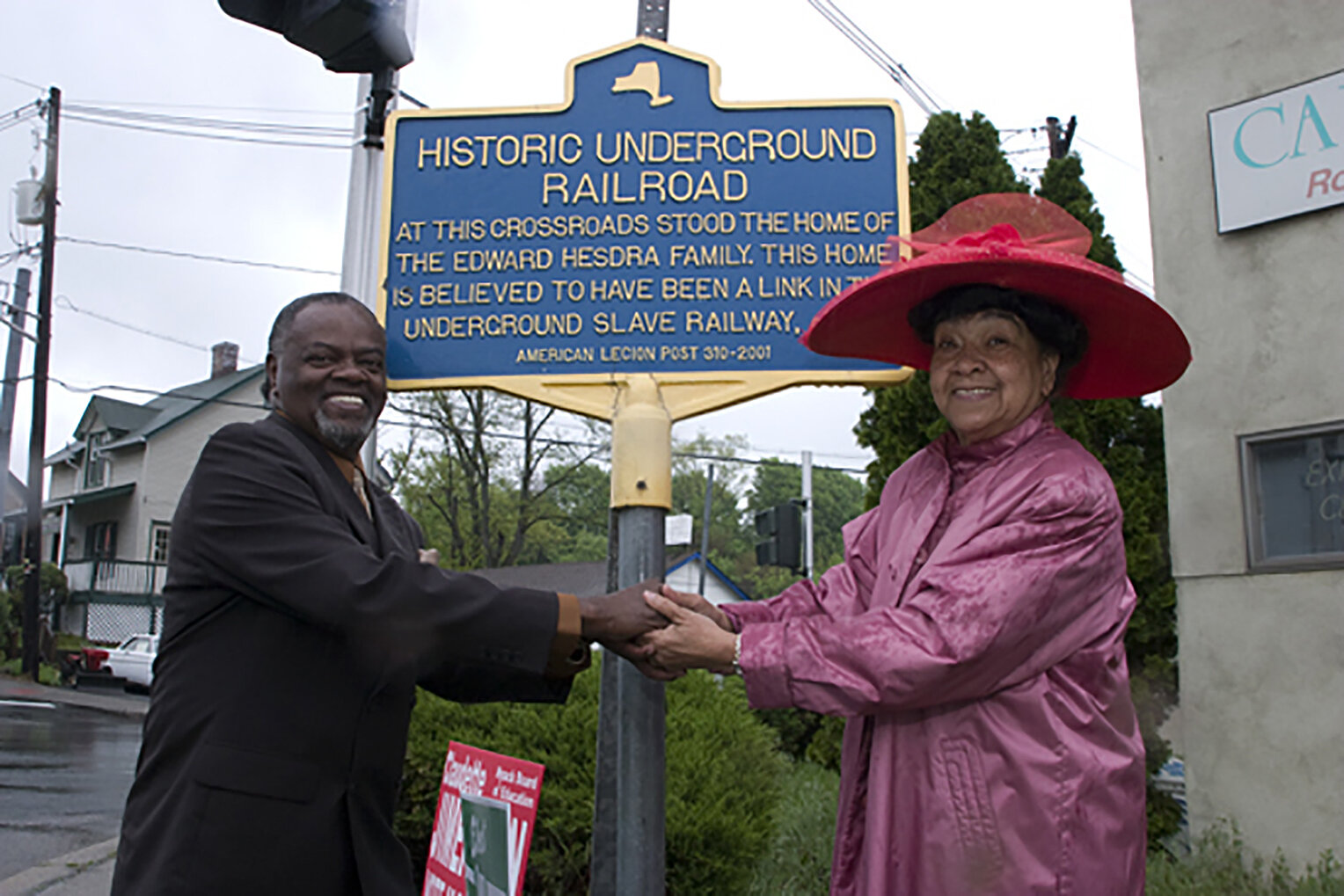
NAACP Presidents, Underground Railroad June 2008
Willie Trotman, NAACP Spring Valley President, and Frances Pratt, NAACP Nyack President, vow to work together to improve the quality of the African American community in Rockland County. This image was from a photography project I worked on entitled 59/59, curated by Rockland photographer Ken Karlewicz. Photographers were challenged to create photographic images important to us as well as those that showed significance on Rt. 59, the longest road in Rockland County. Crossroads 9W and Rt. 59 in Nyack at the Edward Hesdra home, thought to be a Historic Underground Railroad site.
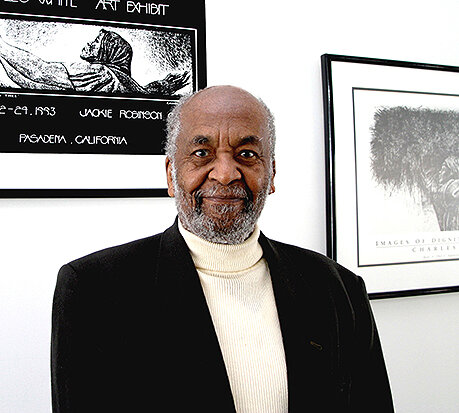
Dr. Edmund W. Gordon, Suffern, NY
Dr. Edmund W. Gordon, RCC Scholar in Residence at Rockland Community College, is sharing his personal artwork by Charles White at the College in celebration of African American History Month. Charles White, a master painter and sculptor was one of America's greatest 20th Century artists.
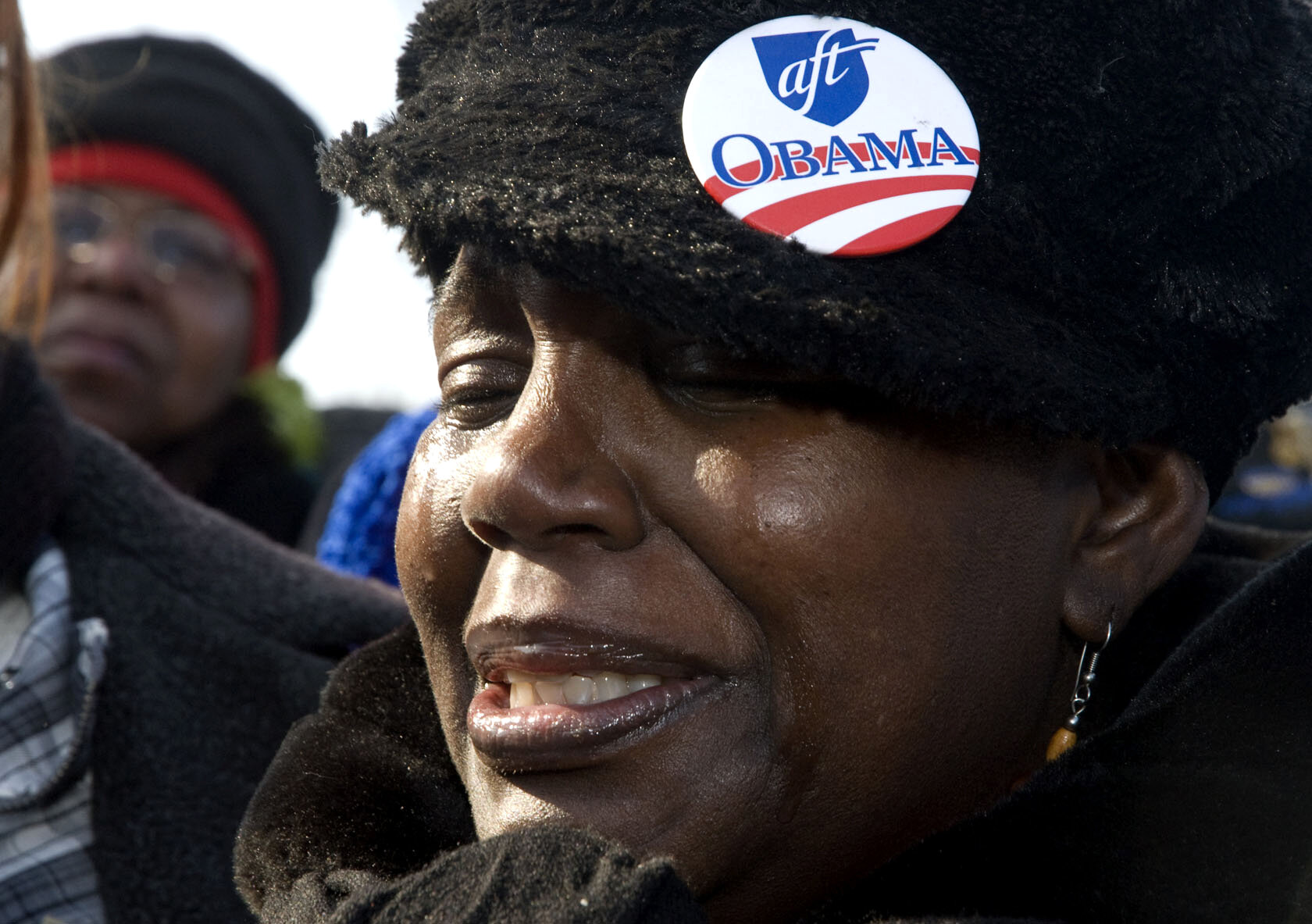
Obama Inauguration, Washington, DC, 2009
A woman, a member of the AFT American Federation of Teachers at the President Obama Inauguration. Her tears illustrated how far she has come as a Black woman in America.
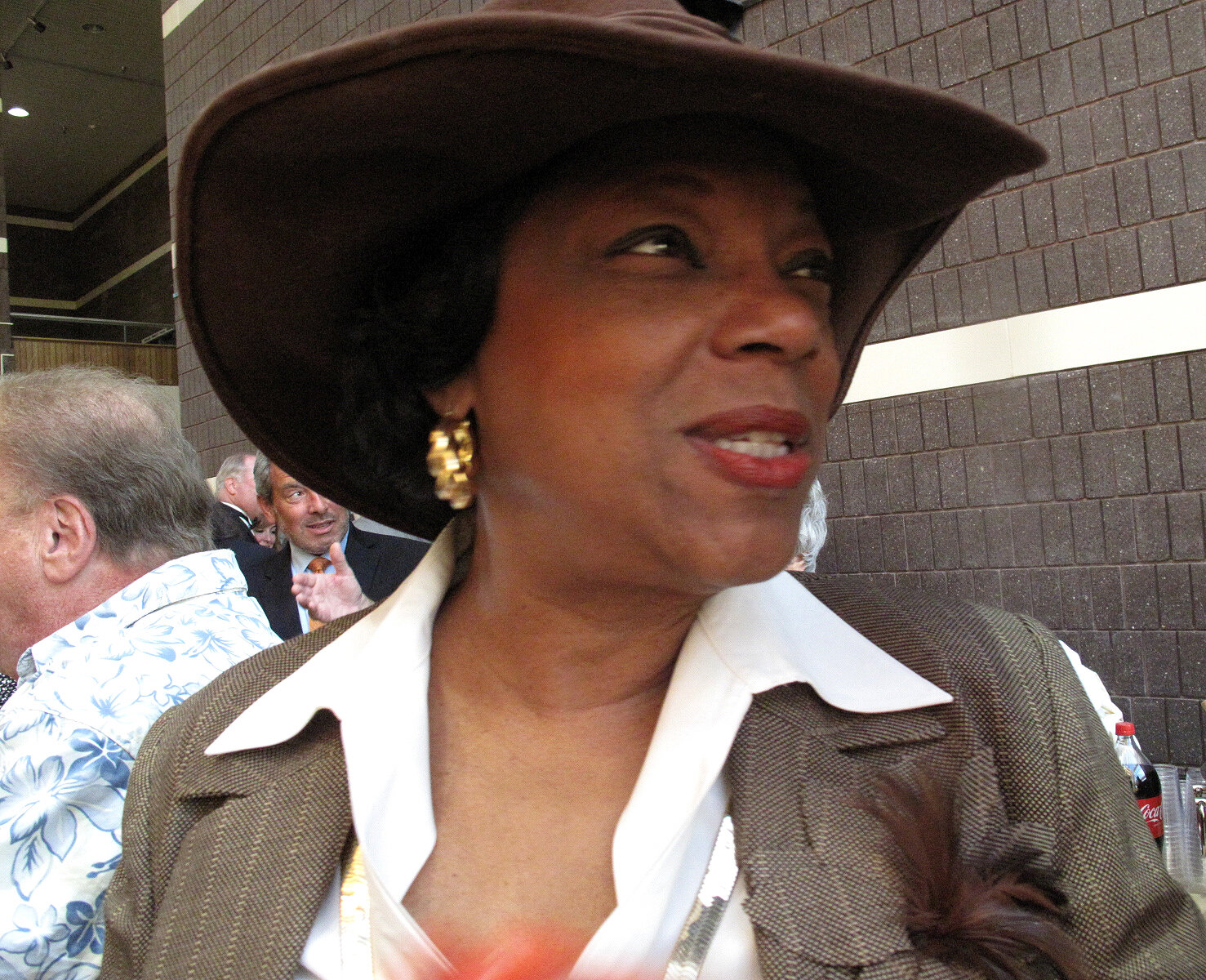
Constance Frazier, Suffern, NY, 2013
Constance Frazier has spent a lifetime contributing to her educational, church, and intellectual community. She is currently the Commissioner of Human Rights for Rockland County and chair.

Die-In for Kimani Gray, Suffern, NY, 2015
Willie Trotman, President of NAACP Spring Valley, and Ken Mercer at Die-in on RCC's campus. They represented the community in support of the college’s students.
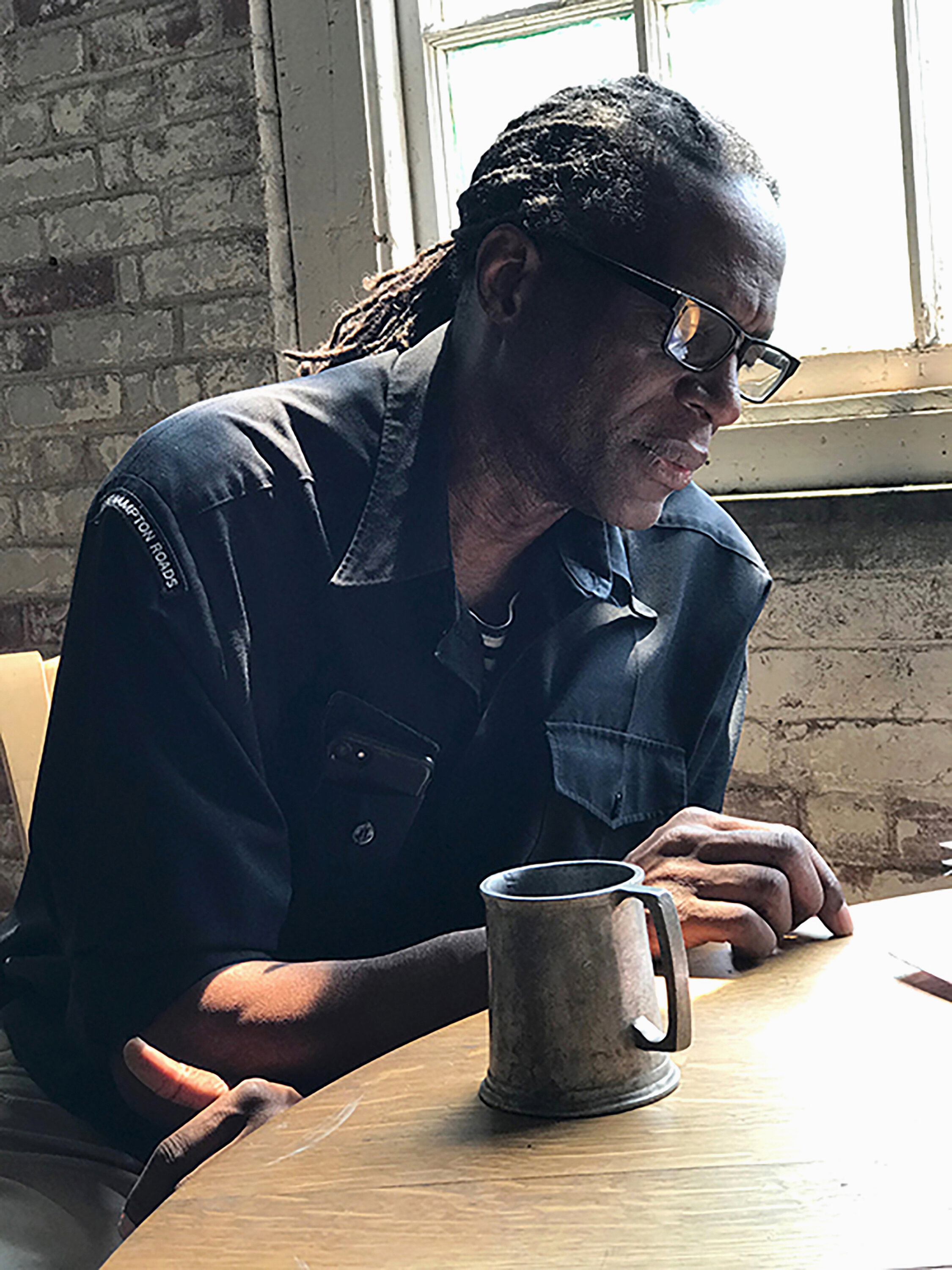
Samuel Harps, Garnerville, NY, 2018
Playwright Samuel B. Harps III working on the Antigone: Nelson Mandela play in his studio at the Garnerville Arts Center in Garnerville, NY. I’ve been photographing Samuel B. Harps III for 30 years. I met Harps at the Bergen Record, where I was a staff photographer and Sam was writing Obituaries for the newspaper. As Artistic Director, he founded the Shades Repertory Theater in 1994 and is the winner of seven Audelco Awards, one for "Don't Explain" the explosive film about Jazz musician Trumpeter Lee Morgan staged at the Nuyorican Poet's Cafe. Early in his career, Harps interned at New York's New Dramatist studying with noted playwrights August Wilson and Charles Gordon. Harps was later accepted as a member of the prestigious Negro Ensemble Company’s playwrights program. He is currently working on film productions.

Deacon Alvin Bell, Sr.. Beacon, NY, 2019
Deacon Alvin Bell, Sr. has had his barbershop on Main St. in Beacon for over 50 years. With an interest in boxing, he’s a very religious man and a Deacon in his church. Deacon Bell’s family hailed from South Hill, VA, and were sharecroppers. Being very poor and haircuts costing .75 cents, he started cutting his family members’ hair. Deacon Bell is a vital part of African American history in the Beacon community.
